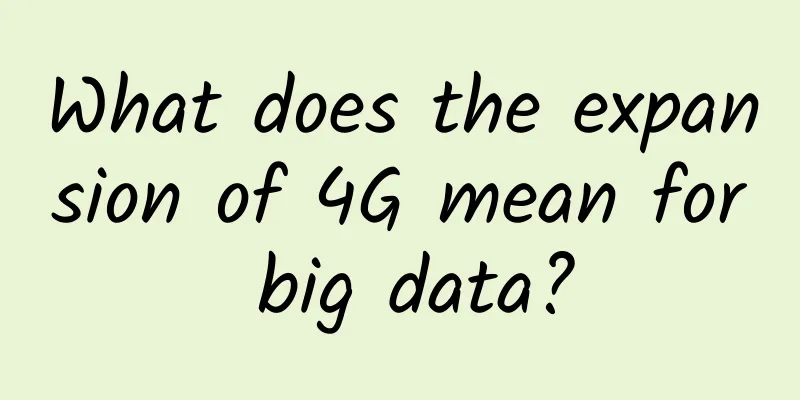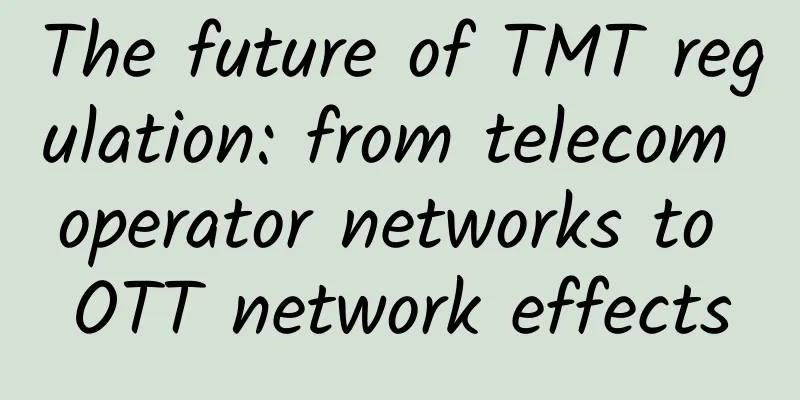What does the expansion of 4G mean for big data?

|
As the market share of smartphones continues to grow, mobile marketing and content marketing have become a battlefield for many Internet companies. Weibo, UC, Toutiao, NetEase News... every refresh will generate a lot of content. As more and more companies rely on big data for content marketing, the ability to analyze information and deploy in real time is becoming an indispensable part of daily business, which requires employees to use analysis and content management technology at any time. The expansion of 4G networks to more fields makes this vision a reality, providing better connections for businesses and consumers. The need for speed Last year, my country officially released the white paper "5G Network Architecture Design" at the 1st 5G Conference. Future cellular data networks may provide customers with faster bandwidth or speed. 71% of mobile users want to load pages through a fast data connection, just like when connected to WiFi. According to surveys, average mobile data consumption has grown to gigabytes, not just megabytes, which means that consumers now use mobile phones and tablets more frequently than before, which generates huge amounts of data.
Data processing companies are already familiar with the fact that content delivery is about customer experience. As 4G networks are rolled out in more and more areas, mobile content can be upgraded from simple text and images to powerful interactive ads that include audio and video. The era of rich mobile content Providing content to increase mobile engagement with users is the biggest part of driving data collection. The power of the mobile web can be used to see how many people are consuming content, which helps companies determine customer intent patterns and use the resulting information to create more targeted advertising campaigns. In the modern market, successful advertising requires a deep understanding of the customer. By leveraging the power of the mobile web, it is possible to discover the type of device consumers are using, their content consumption behavior, and their favorite apps. This information allows companies to break the market into smaller subsets, understand user preferences, and provide content marketing that is targeted to the type of user preferences. Companies hoping to use mobile networks to deliver content and analyze data may have to wait a while. The infrastructure needed to support lightning-fast speeds may be difficult to implement, and the technology's greatest advances have yet to materialize. In the future, businesses may use machine-to-machine (M2M) communications to track and record more information about consumers, product popularity and efficiency to provide a better customer experience than in the past. As 4G technology expands around the world and 5G technology is developed, more companies will begin to use big data to expand their reach, increase their customer base and increase profits. From deploying richer content to obtaining detailed real-time reports, it can help companies succeed in the modern market. |
<<: Forecast of cellular network development trends in 2017
>>: Why are there fewer and fewer open source projects using the GPL protocol?
Recommend
5G news is coming, and the national trial commercial use will start in mid-to-late October!
[[426617]] After much anticipation, the long-awai...
Do you know how to use a switch? The correct way to connect a switch
In the era of popular Internet, many families hav...
5G and emerging technologies drive data center growth in India
Since 2018, India has made great strides in advan...
Is SDN going to die? See what everyone is saying!
With the advent of network automation, programmab...
HostKvm: 30% off Hong Kong VPS, 4.9/month KVM-1G memory/10G hard disk/50M bandwidth
HostKvm is a foreign VPS service provider founded...
There are still more than 200 million IPv4 addresses unassigned!
Hello everyone, I’m Xiaofu. In 2019, there were r...
Mastering Internet sovereignty in the IPv6 era is a war we cannot afford to lose
30 seconds quick read For the Chinese Internet, t...
A must-read for network engineers! Essential knowledge points for IP routing in 2020
RIP RIP (Routing Information Protocol) is a pure ...
CUBECLOUD new Hong Kong international line monthly payment starts from 39 yuan
CUBECLOUD (Magic Cube Cloud) recently launched a ...
Comprehensive analysis of the ten most critical technologies in the 5G network field
When it comes to 5G, many people's impression...
edgeNAT Korea/Hong Kong KVM 20% off, top up 500 yuan and get 100 yuan free
edgeNAT is a Chinese VPS hosting company establis...
Virtono: $2.5/month KVM-1GB/30GB/2TB/16 data centers in Hong Kong, Japan, Singapore, etc.
Virtono is a foreign VPS hosting company founded ...
Tencent Cloud Spring Purchase: 2C2G4M cloud server only 40 yuan/year or 200 yuan/3 years, 4C8G10M cloud server only 211 yuan/year
Tencent Cloud launched a Spring Festival shopping...
Comprehensive popular science about "Internet of Vehicles"!
Speaking of the Internet of Vehicles, I believe e...









